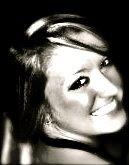Some things I'm doing in my social deviance class:
I believe that the so-called “war on drugs” has definitely been a failure, or at least a misguided or sham attempt at driving drugs out of America. The United States government must know by now, after three failed attempts to combat drug use and the failed attempt at prohibition, that harsher negative action against drug users is not the answer. I am a firm believer in positive action towards being sober as a cure for drug use. When you react to something positively, whether it is illegal or not, what you are working positively to make happen, will happen. The more we refer to “the war on drugs” and react more harshly towards it, the more negative attention drug users and sellers receive, and they more they will continue or redouble their efforts. In the case of marijuana being illegal in the United States, we need to simply look at other countries that have legalized marijuana systems. I think America needs to make faster moves towards this solution, because regulating marijuana use while it is legal is much easier than trying to control something that is always trying to be hidden. However, it is in my opinion that this country makes too much money off the illegal sale of drugs for them to risk legalizing anything and having it be much more inexpensive, such as in the case of tobacco. In the case of other “harder” illegal drugs, I believe that we should use positive action to decrease the want for Americans to use these drugs, my making them more “taboo” in society and less accepted. These are obviously large changes that will need to be made and they will reshape society as we know it, but slow and steady wins the race and simply coming down harder on offenders will not work as it has not in the past.









